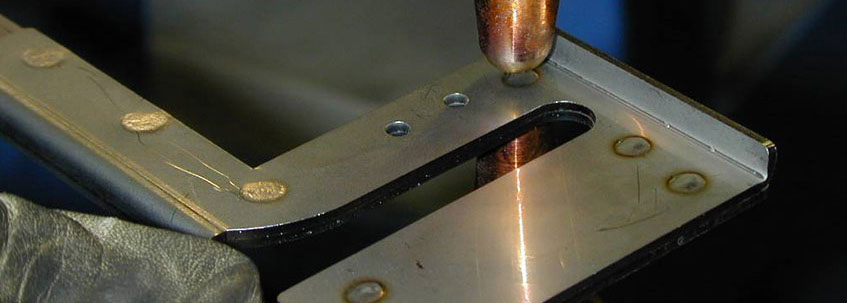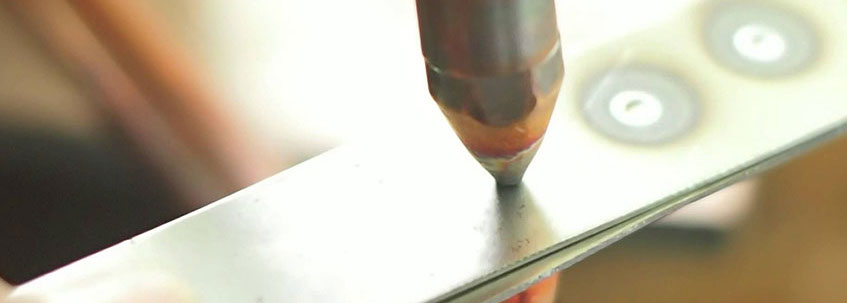Welding, Polishing and assembly
Welding, assembling, integrating and test systems within our in-house specialized facilities













With the ability to process materials from steel to stainless steel, our custom SMAW, MIG/MAG, TIG, Spot welding services cater to lighter gauge and structural components. We offer a wide range of arc/resistance welding processes. Our welding services meet with high industry standards.
Assembling is done by welding, binding with adhesives, riveting, threaded fasteners, or even yet more bending in the form of a crimped seam. Welding is the main focus of steel fabrication. The formed and manufactured parts will be assembled and tack welded into place then re-checked for accuracy. A fixture may be used to locate parts for welding if multiple weldments have been ordered.
Metal sheet are the usual starting materials for fabrication, along with the welding wire, and other fasteners that will join the cut pieces. As with other manufacturing processes, both human labor and automation are commonly used.
Assembly and Integration
We provide assemblies and integration services for high precision and complex sheet metal products.
We manufacture, assemble, integrate and test systems within our in-house specialized facilities, adjacent to our engineering, design and development teams.
We uphold the highest quality standards when integrating and assembling a system, resulting in reliability and reproducibility of all products.
CUSTOM GRINDING, POLISHING & FINISHING SERVICES
To further enhance the quality and with the capability of being applied to both formed metal pieces and welded assemblies, we offer several types of finishing services such as deburring, tapping and polishing from mill finish to mirror.
Our grinding, polishing and finishing services offer quality, high-end product that meets optimal industry standards.
Accurate Metal Fabricating saves you time and delivers a beautiful finished product with expert polishing, grinding, and deburring services. Grinding is considered one of the most accurate of the existing machining processes. In precision sheet metal fabrication, grinding is performed to yield a very fine finish of accurate dimensions. In essence, grinding is a cutting process utilizing abrasives as the cutting tool.
To provide the best value, Accurate utilizes metal finishing machine wherever possible and also incorporates other equipment available to insure accurate, professional, and cost-effective deburring. After the grinding, sanding, and/or deburring process, we can polish metal components with a variety of finishes, including smooth and brushed finishes.
Cleaning up sheet metal work that has been welded
Once all the welding has taken place on a certain part or assembly of parts any cleaning up and smoothing off of the welds can take place. We use a range of hand held grinders, orbital sanders, electrical and air operated to work with the welds. Using a range of different disc grades and media we can go right down to smooth joints the same as the parent metal. The example show in Image T is of a stainless steel enclosure that has been bent up, welded and cleaned off smooth with the final finish achieved by orbital sanding. The enclosure was then powder coated and no signs of the welding and cleaning up was visible through the powder surface.
As well as cleaning up welds we have a range of deburring machines that we use to remove any unwanted edge burrs that might be present on sheet metal work after it's been laser cutted.
Typical grinding tools include handheld power tools, such as angle grinders and die grinders, as well as fixed belt and bench grinders. Closely related to grinding is sanding, a process performed to either smooth the surface or to prepare the surface for a finishing process. Both sanding and grinding demand a high level of skill to produce accurate dimensions and finish, and, like deburring, are given careful consideration to deliver the best value and lowest costs to our customers. Burrs are generally unwanted material remaining after a machining operation such as punching, drilling, milling, or shearing and are usually in the form of a raised portion on the surface of the component. When these burrs are removed it is called deburring. Burr formation in machining processes can account for a significant portion of the total machining costs depending on the design and the need to remove burrs or sharp edges from the component. The cost impact of deburring should not be underestimated if it is essential to the design. Effective deburring begins with the correct selection of clearances used in the perforation or cutting process to minimize the formation of burrs.



















































